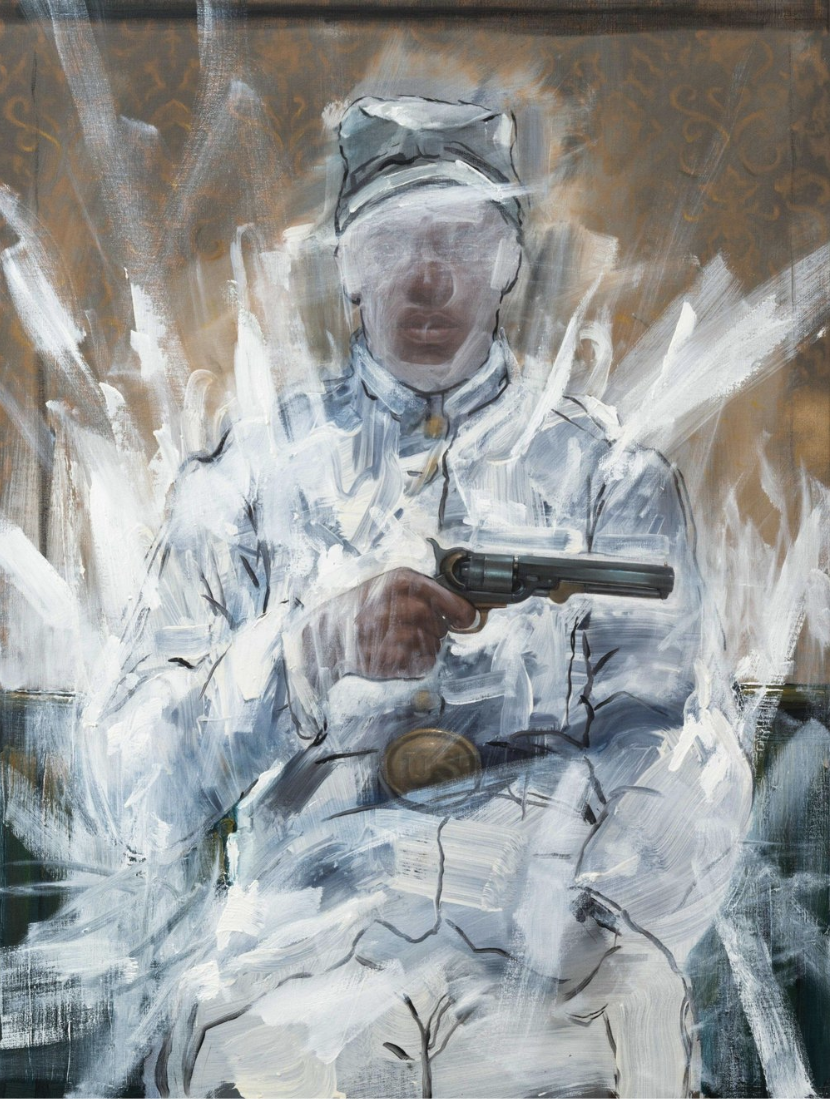On Monday, December 10th, 2018, the 10th grade visited the National Portrait Gallery to view the works of Titus Kaphar, an artist who strives to give new meaning to history through art. In the exhibit Unseen, Kaphar draws attention to the plight, struggles, and underrepresentation of African Americans in history.
Titus Kaphar was born in 1976 and lives in New Haven, CT. He has won many awards due to his unique artwork, including a 2018 McArthur “Genius” Grant, a 2015 Creative Capital grant, a 2016 Robert R. Rauschenberg Artist as Activist grant, a 2018 Art for Justice Fund grant, and the 2018 Rappaport Prize. His work has been featured in the Museum of Modern Art, Yale University Art Gallery, and, most recently, the National Portrait Gallery.
So what makes Titus Kaphar’s artwork so special?
Perhaps the ingenuity of his paintings lies in his inspiration. In interviews, Kaphar describes a moment when his 9-year-old son asked of a sculpture of Theodore Roosevelt in a museum, “Daddy, how come he gets to ride on the horse and those two guys have to walk?”
In Kaphar’s words, “Therein lies the complexity, all the complexity, of American history, spouted from the mouth of a 9-year-old.” What I realized at that moment is that we have all of this public sculpture, all of these national monuments that don’t actually reflect our contemporary values anymore. So I started thinking, “Is there a way to amend public sculpture?” And so that’s where this project came from.”
According to the National Portrait Gallery, “Kaphar defaces, cuts, and peels back his paintings to show how portraits of American historical figures, such as Thomas Jefferson and Andrew Jackson, have traditionally coded racial difference, hid systemic prejudices, and omitted the presence of African Americans.”
Titus Kaphar incorporates a modern understanding of historical art pieces, questioning the morality of this nation by revealing how art frequently maligned or underrepresented African Americans. He repaints portraits of well-known or famous individuals, including presidents like George Washington, but draws attention to the sacrifices of African Americans in those paintings and show their perspective.

Kaphar is unique in his idea of combining art and history to force viewers to question the past. His works highlight the role of African Americans in Colonial America, who are often overlooked and ignore in art. He remakes paintings and portraits but changes them, often through whitewashing, cutting, or folding, to draw attention to a new dimension behind the portrait.
“Unseen,” an exhibit that showed at the Smithsonian from March 23, 2018 to January 6, 2019, featured many paintings of historical and contemporary value. These art pieces brought out hidden elements of traditional paintings and enabled viewers to question the underrepresentation of African Americans in history.
As the 10th graders are learning about American history, the exhibit offered a new perspective to them. Andrew Jackson was torn up in Kaphar’s work, showing the deadly effects of his Indian Removal Act. Thomas Jefferson, fully clothed, is painting over Sally Harrison, the slave woman with whom he had an affair, portraying the power dynamic between the two. An African American soldier, distorted behind white paint as the gun he holds is all too clear. These images, connected to history, reveal a depth to WIS’ 10th-grade history curriculum that enhances students’ understanding of America’s past.
Even though the time to view the exhibit is gone, Titus Kaphar is still a promising artist to look at, especially as his career is far from over. Kaphar’s paintings not only demonstrate incredible skill but also a global movement to voice the thoughts of minorities in the past and present. Listen to his TED Talk, visit his website, or take a look at one of his exhibits. It’s worth it.
By Sneha Parthasarathy
































































